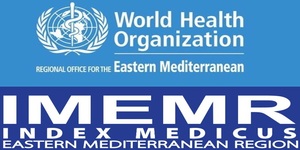Evaluation of the spectrum of bacteria encountered in patients with chronic suppurative otitis media with their antibiotic sensitivity pattern
DOI:
https://doi.org/10.36321/kjns.vi20123.2537Keywords:
hronic suppurative otitis media, Pseudomonas aeruginosa, Staphylococcus aureus, ciprofloxacin, gentamicinAbstract
Objectives: The aim of this study was to determine the most frequent bacteria that cause chronic suppurative otitis media (CSOM) and their sensitivity to various antimicrobials so that an appropriate therapy can be started promptly while awaiting the results of the culture and sensitivity of the isolate to various antibiotics.
Methodology: This study was conducted at Al-Forat teaching hospital in Najaf city at the ear-nose-throat (ENT) department in December 2010 to April 2011. The swab was taken of ear discharge before starting the antibiotics and cultured on MacConkey agar (Oxoid, England) and blood agar (HI Media, India). Gram positive bacteria were identified on the bases of colony morphology, Gram staining, catalase test and coagulase test while the Gram negative bacteria were identified by oxidase test and API 20E (API BioMerieux, France). The sensitivity of the isolates to various antibiotics was tested by Kirby Bauer disk diffusion technique.
Results: The study showed that females are more prone to get the infection than males in a ratio of 1.8: 1 and the frequent ages liable for infection lie between 3 months-15 year, also it revealed that the gram negative bacteria were more frequent in causing the infection than gram positive bacteria in a ratio of 2.64 :1 and Pseudomonas aeruginosa was the most frequent species that causes CSOM then Staphylococcus aureus and Proteus mirabilis. Pseudomonas aeruginosa was more sensitive to ciprofloxacin than to gentamicin, Staphylococcus aureus also showed more sensitivity to ciprofloxacin than gentamicin, while Proteus mirabilis had the same degree of sensitivity to those 2 antibiotics.
Conclusions: 1- Children are more prone to be infected with CSOM because of their small Eustachian tube and low immunity. 2- Gram negative bacteria were more common in causing the infection than gram-positive bacteria in this study. 3- Pseudomonas aeruginosa was the most frequent bacteria that cause CSOM then Staphylococcus aureus and Proteus mirabilis. 4- Pseudomonas aeruginosa was more sensitive to ciprofloxacin than to gentamicin despite the fact that gentamicin is known to be effective against gram negative bacteria including Pseudomonas aeruginosa propably because of antibiotic miss use and genetic mutation of Pseudomonas aeruginosa.
Downloads
Downloads
Published
How to Cite
Issue
Section
License
Copyright (c) 2014 Seher A. Almedeny

This work is licensed under a Creative Commons Attribution 4.0 International License.













